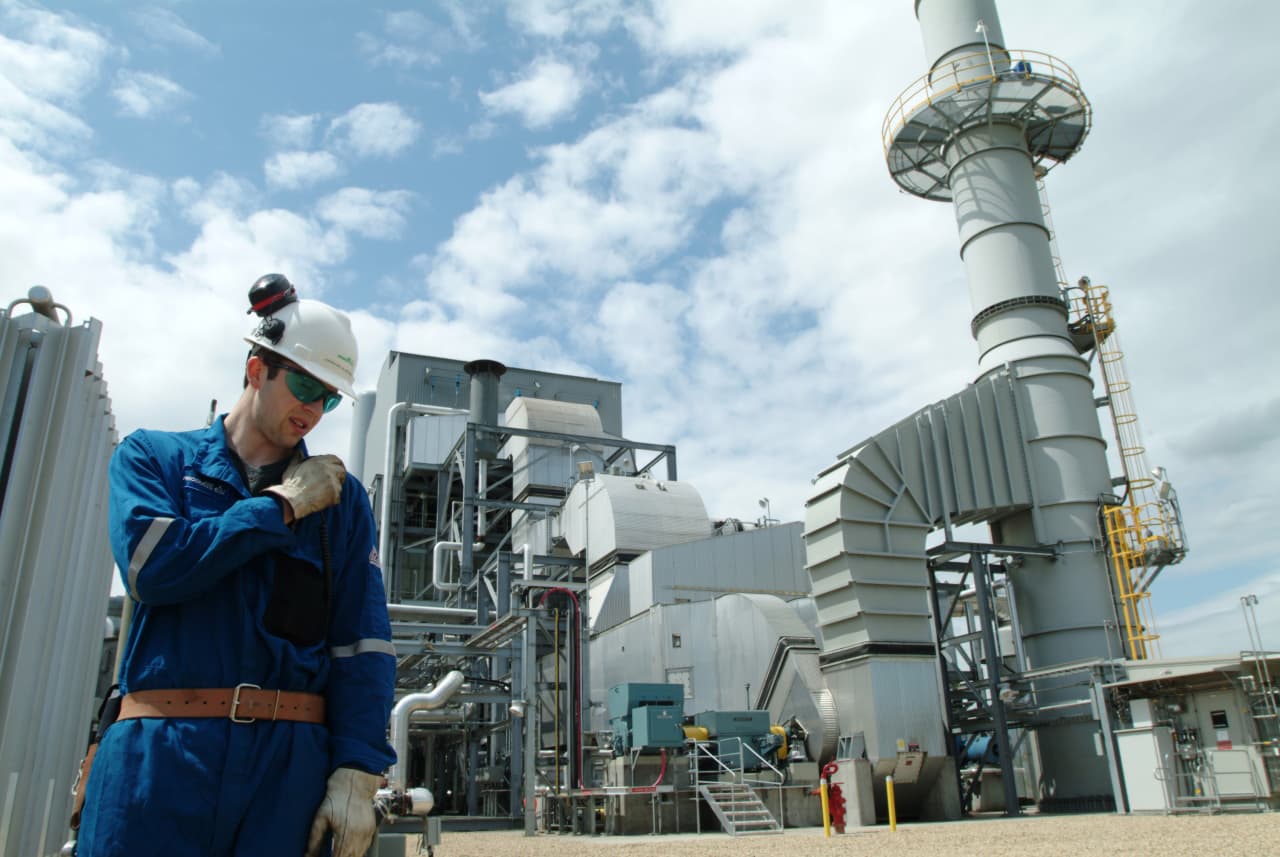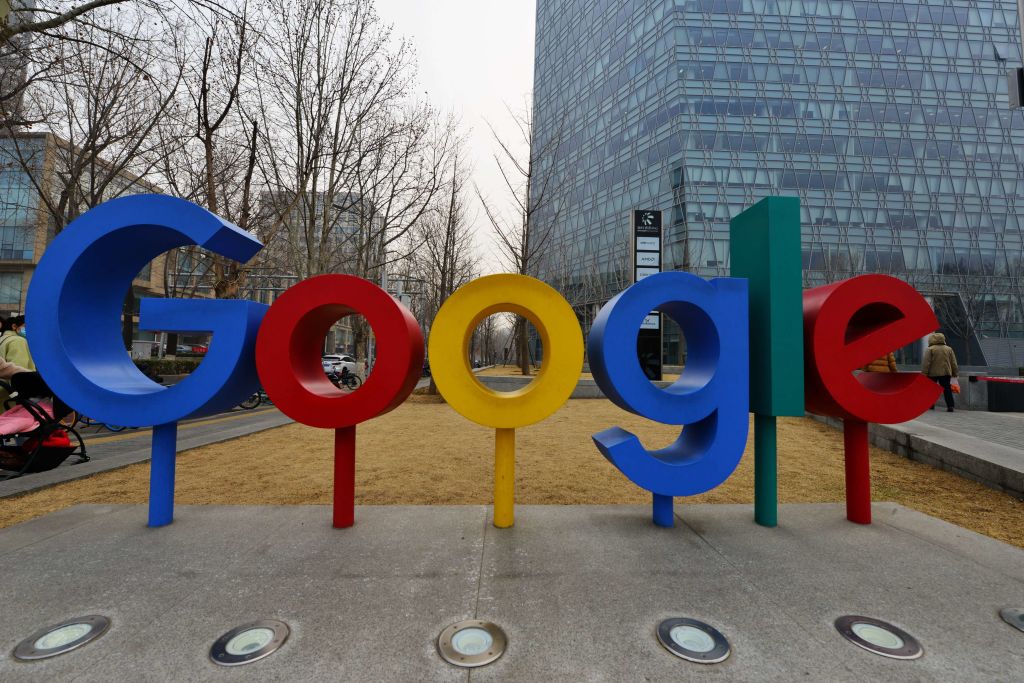Investors may want to give hydrogen a second look, but they’ll need to be patient.
There’s not a lot of love for the fuel on Wall Street. The Global X Hydrogen ETF is down 81% from its high in 2021, and other hydrogen stocks are well below their peaks.
Skeptics say the cleanest hydrogen is too pricey and still far away from becoming part of a viable marketplace. The government is still sorting out regulation and industry incentives. New infrastructure will be required, and it isn’t clear there will be enough customers once it’s built.
But even as investor enthusiasm faded, a raft of companies have been quietly exploring hydrogen as a clean-burning fuel that can be a building block in the energy transition. There are numerous corporate projects in development that could help propel the growth of a hydrogen economy and drive profits in the future. The Department of Energy is investing $8 billion in promoting clean hydrogen, with the creation of seven hydrogen hubs around the U.S. within the decade.
Many energy and petrochemical companies are studying or have hydrogen projects in the works as a way to decarbonise. One reason is that hydrogen is used in the refining process, and cleaner hydrogen could be used in industrial processes. Hydrogen can be turned into ammonia and is used in fertiliser. In its next wave, hydrogen could be widely used in industrial applications like steel making and for fuel in ships and aircraft.
Supporters believe all the money pouring in now will help bring costs down as hydrogen projects scale. Investors may want to look at traditional energy and industrial companies that are currently working on hydrogen projects as a way to play the long-term growth of a hydrogen market.
“All these companies…have decarbonisation aspirations,” said Marc Bianchi, managing director at TD Cowen. There’s a meaningful opportunity for companies that are already using thousands of tons of hydrogen a day to switch from dirtier to cleaner sources.
The U.S. uses about 10 million tons of hydrogen a year for applications such as refining and fertilizer. Hydrogen demand was about 2% of global energy consumption in 2020 and could grow to 20% to 30% in a net-zero economy, according to S&P Global Commodity Insights.
Hydrogen gas is colourless, but industry shorthand assigns colours based on how the fuel is produced. Green hydrogen is the most desirable. Electricity generated from solar or wind is used to split hydrogen from water molecules and produces no carbon byproducts. Blue hydrogen is made by using natural gas along with capture and storage technologies to limit CO2. Grey hydrogen is made with natural gas or methane and generates carbon dioxide.
S&P Global Commodity Insights projects the cleanest hydrogen, even with incentives, would be about three times more costly in parts of the country where renewable energy is more expensive, like the Northeast. In the best case, green hydrogen produced in Texas, using proposed tax incentives and credits, could be as low as $1 per kilogram, slightly less than the $1.3 per kilogram cost of grey hydrogen. In Europe, green hydrogen is $6 to $9 per kilogram.
The energy industry, however, is waiting to see the final structure of U.S. tax credits granted to clean hydrogen under the Inflation Reduction Act. The Internal Revenue Service issued a draft guidance on implementation.
It was viewed as too restrictive by many in the industry, and some industry executives say it put a chill on activity while they wait to see how deep incentives will be for their proposed processes. The comment period has just ended.
“Anyone in power generation wants to talk about hydrogen,” said Richard Voorberg, president of North America for Siemens Energy . “Now, we’ve seen that plateau over the last little while, meaning months. Everyone was excited about [the Inflation Reduction Act], but the guidance that came out Dec. 22 had people scratching their heads.”
Ernest Moniz, a former energy secretary, heads the consortium formed to organise a market for clean hydrogen, called the Hydrogen Demand Initiative. Moniz said recently that the guidance presented by the IRS was too narrow and could slow the industry’s growth if not changed.
“The philosophy has been to require upfront decarbonisation of the electrons that you’re supposed to be using for the electrolysis of water, and the fear—and I certainly fear it—is this will significantly inhibit the near-term demand creation,” Moniz said. “We might end up with a very low carbon grid, but a hydrogen market that’s way behind where it should be at that time.” He added that he’s watching for how the IRS adjusts its plans for the tax credits.
Investors looking at companies with hydrogen projects need to be sure the value is there for the company’s traditional businesses. Analysts say valuations don’t appear to reflect potential for hydrogen, even if some had in the past.
Hydrogen was once the “shiniest new toy” for investors, but disillusionment has set in, said Timm Schneider, CEO of Schneider Capital Group. “Not one investor has asked me about hydrogen at any company, like Chevron or Exxon, that has a hydrogen project, over the past 12 months,” he said.
One way to invest in the transition is through industrial gas companies. S&P Global is projecting that Air Products and Chemicals will be the leading industrial gas producer of hydrogen, in the amount of 5.2 million metric tons by 2030. Exxon Mobil is positioned to be the largest producer among oil-and-gas companies, with 1.5 MMT, S&P Global said.
Air Products CEO Seifi Ghasemi, speaking at the CERAWeek by S&P Global conference last month, said his company is currently the largest producer of grey hydrogen globally. He wants to be the leader in green and blue. The company began producing grey hydrogen at the request of the U.S. government in the 1950s for use in the space program.
Ghasemi said the company has two major projects in development. One is in northern Saudi Arabia, where the company will use wind and solar with its partners to create 650 tons of hydrogen a day. That project, he said, IS “30 times bigger than anything that exists today.”
Air Products has been collaborating with Baker Hughes , an energy services and technology company that has developed turbines and compressors. Baker is working on the hydrogen project in Saudi Arabia and the two have another project under way in Alberta, Canada that is expected to be operational next year. “Baker Hughes is interesting. It is supplying a turbine to that project in Alberta that’s going to run on 100% hydrogen. That’s been a bit of a challenge for the industry, to burn hydrogen in a turbine,” said Bianchi. Baker Hughes, he said, was the first to succeed.
The demand for hydrogen is still uncertain and the market is nascent. The anticipated supply of hydrogen is well ahead of demand, Enverus Intelligence Research said in a report last week. Only 30% of the U.S. projects expected by 2030 have disclosed customers.
But there was a bright note in the Enverus report. European Union decarbonisation targets could mean U.S. producers could find a significant export market.
Exports are what helped turn the U.S. into the leading producer of oil and gas. The energy industry might follow that playbook again with hydrogen.
 Copyright 2020, Dow Jones & Company, Inc. All Rights Reserved Worldwide. LEARN MORE
Copyright 2020, Dow Jones & Company, Inc. All Rights Reserved Worldwide. LEARN MORE
What a quarter-million dollars gets you in the western capital.
Alexandre de Betak and his wife are focusing on their most personal project yet.
CIOs can take steps now to reduce risks associated with today’s IT landscape
As tech leaders race to bring Windows systems back online after Friday’s software update by cybersecurity company CrowdStrike crashed around 8.5 million machines worldwide, experts share with CIO Journal their takeaways for preparing for the next major information technology outage.
Be familiar with how vendors develop, test and release their software
IT leaders should hold vendors deeply integrated within IT systems, such as CrowdStrike , to a “very high standard” of development, release quality and assurance, said Neil MacDonald , a Gartner vice president.
“Any security vendor has a responsibility to do extensive regression testing on all versions of Windows before an update is rolled out,” he said.
That involves asking existing vendors to explain how they write software, what testing they do and whether customers may choose how quickly to roll out an update.
“Incidents like this remind all of us in the CIO community of the importance of ensuring availability, reliability and security by prioritizing guardrails such as deployment and testing procedures and practices,” said Amy Farrow, chief information officer of IT automation and security company Infoblox.
Re-evaluate how your firm accepts software updates from ‘trusted’ vendors
While automatically accepting software updates has become the norm—and a recommended security practice—the CrowdStrike outage is a reminder to take a pause, some CIOs said.
“We still should be doing the full testing of packages and upgrades and new features,” said Paul Davis, a field chief information security officer at software development platform maker JFrog . undefined undefined Though it’s not feasible to test every update, especially for as many as hundreds of software vendors, Davis said he makes it a priority to test software patches according to their potential severity and size.
Automation, and maybe even artificial intelligence-based IT tools, can help.
“Humans are not very good at catching errors in thousands of lines of code,” said Jack Hidary, chief executive of AI and quantum company SandboxAQ. “We need AI trained to look for the interdependence of new software updates with the existing stack of software.”
Develop a disaster recovery plan
An incident rendering Windows computers unusable is similar to a natural disaster with systems knocked offline, said Gartner’s MacDonald. That’s why businesses should consider natural disaster recovery plans for maintaining the resiliency of their operations.
One way to do that is to set up a “clean room,” or an environment isolated from other systems, to use to bring critical systems back online, according to Chirag Mehta, a cybersecurity analyst at Constellation Research.
Businesses should also hold tabletop exercises to simulate risk scenarios, including IT outages and potential cyber threats, Mehta said.
Companies that back up data regularly were likely less impacted by the CrowdStrike outage, according to Victor Zyamzin, chief business officer of security company Qrator Labs. “Another suggestion for companies, and we’ve been saying that again and again for decades, is that you should have some backup procedure applied, running and regularly tested,” he said.
Review vendor and insurance contracts
For any vendor with a significant impact on company operations , MacDonald said companies can review their contracts and look for clauses indicating the vendors must provide reliable and stable software.
“That’s where you may have an advantage to say, if an update causes an outage, is there a clause in the contract that would cover that?” he said.
If it doesn’t, tech leaders can aim to negotiate a discount serving as a form of compensation at renewal time, MacDonald added.
The outage also highlights the importance of insurance in providing companies with bottom-line protection against cyber risks, said Peter Halprin, a partner with law firm Haynes Boone focused on cyber insurance.
This coverage can include protection against business income losses, such as those associated with an outage, whether caused by the insured company or a service provider, Halprin said.
Weigh the advantages and disadvantages of the various platforms
The CrowdStrike update affected only devices running Microsoft Windows-based systems , prompting fresh questions over whether enterprises should rely on Windows computers.
CrowdStrike runs on Windows devices through access to the kernel, the part of an operating system containing a computer’s core functions. That’s not the same for Apple ’s Mac operating system and Linux, which don’t allow the same level of access, said Mehta.
Some businesses have converted to Chromebooks , simple laptops developed by Alphabet -owned Google that run on the Chrome operating system . “Not all of them require deeper access to things,” Mehta said. “What are you doing on your laptop that actually requires Windows?”















